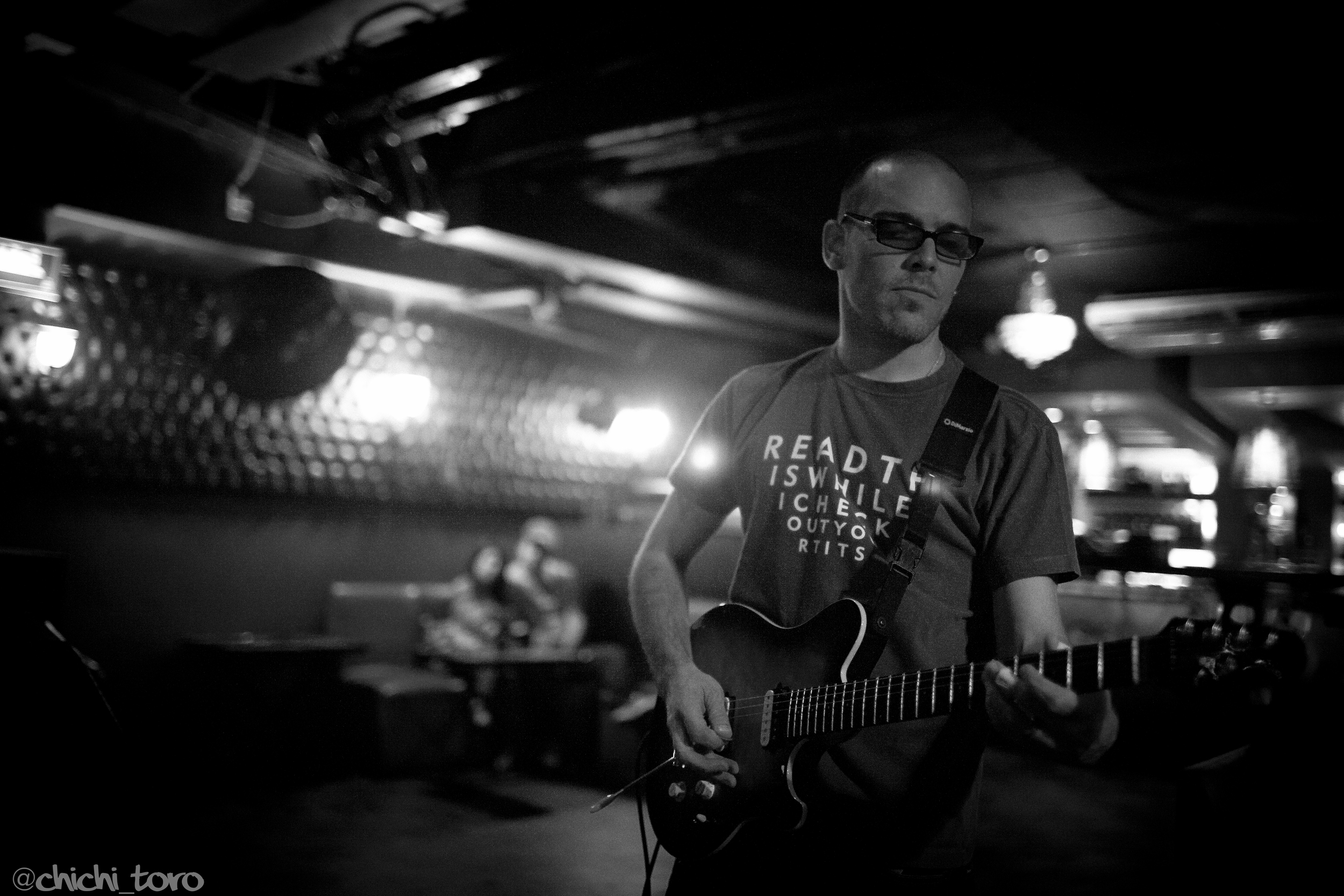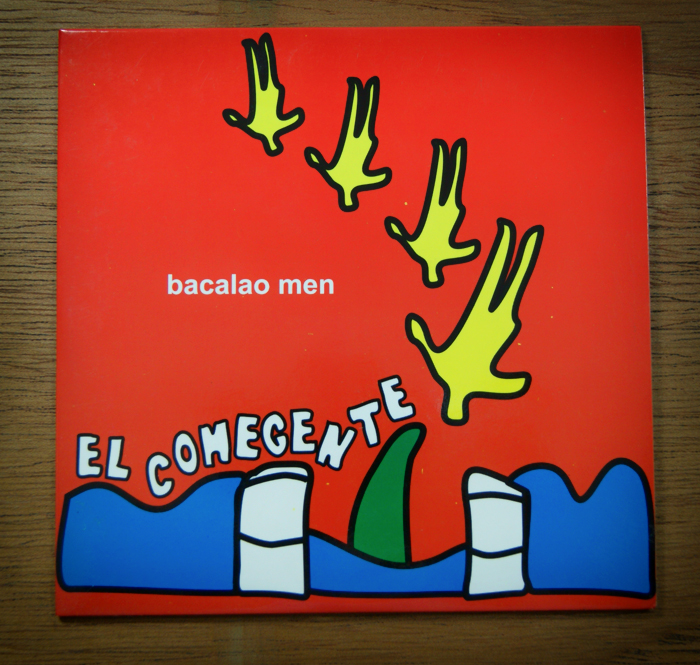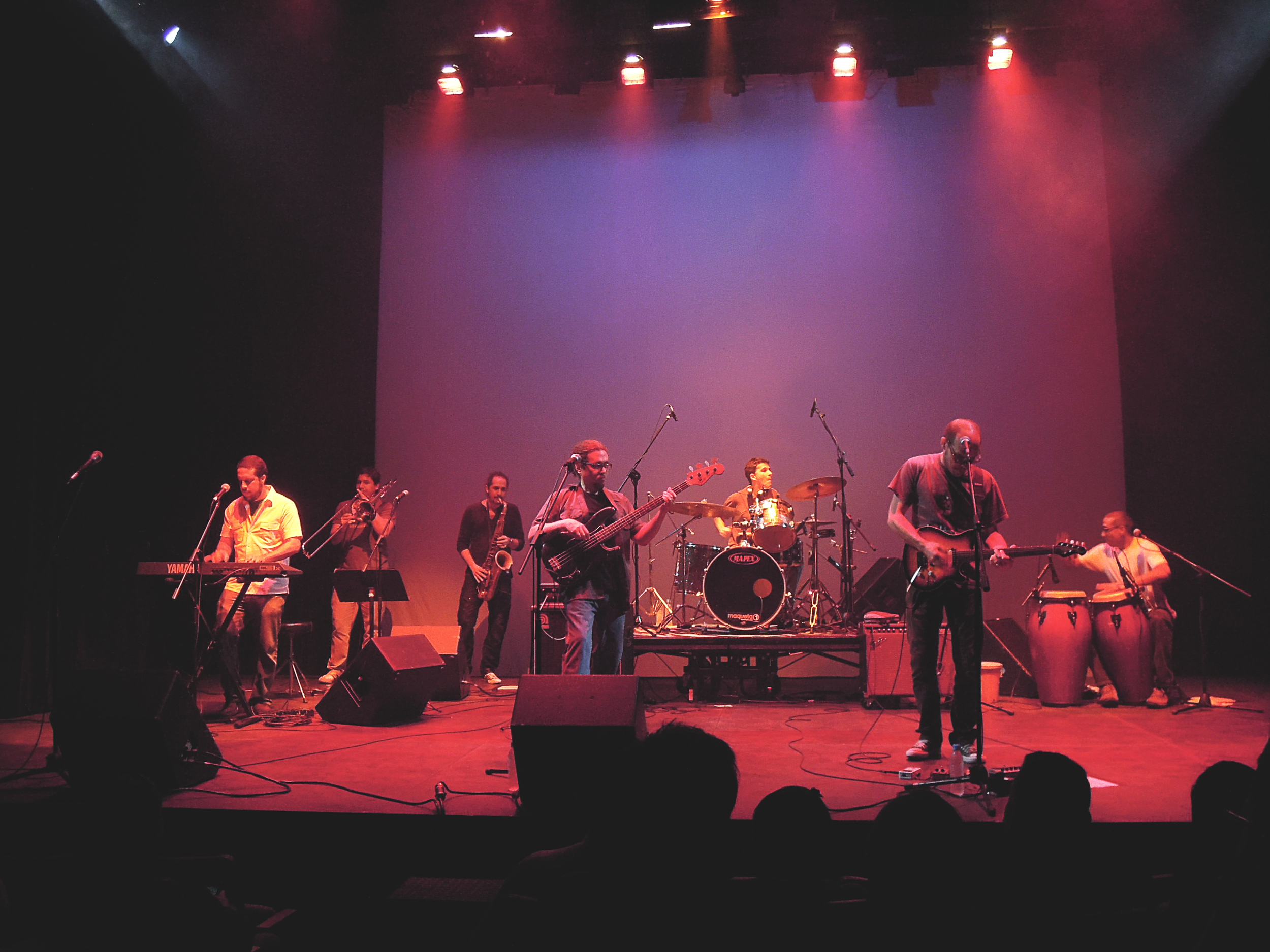BACALAO MEN
Bacalao Men was born in Caracas in 1999, when Pablo Estacio asked two musician friends to form a songo band. The group first featured Sebastián Araujo on drums, Aurelio Martínez on sax, and Pablo Estacio on bass and vocal. Within the first jam sessions, the musical structures and atmosphere that would give Bacalao its essence began to emerge, with its intelligent lyrics, afrolatin beats with jolts of funk, hip hop and electronic.
The formation soon was enriched with the integration of DJ Hernia; Vladimir Rivero, Caracas’ legendary salsa percussionist, and Rafael Gómez, guitarist of Lapamariposa. With its new members, and an undeniably original repertoire, Bacalao embarked on its first era of concerts in different Caracas venues and all throughout Venezuela, quickly generating a buzz about its indisputably new yet familiar sound.
The music created during this first phase of Bacalao was developed into the first album, an independent production by Obeso/Pacanins released under the name Bacalao Men (2001). Its musical style came from a wild savor for salsa and Caribbean rhythms, but was also loaded with electronic textures and recycled everyday city sounds. Its tracks began to regularly sound on the radio such as Cucaracha (a psycadelic songo), Vitaminas (hip-hop with bugalu), and Biología Marina (Patanemo rhythm) and El Vigilante.
Soon, more new members integrated, amongst them percussionist Tomás Fajardo, founder of Lapamariposa and seasoned musician, expert and researcher of Afro-Caribbean percussion and Julio Andrade on front saxophone. Shortly after, guitarists Rigel Michelena joined too, staying on as a constant in the formation. With these new additions to the group, the sound of Bacalao naturally evolved, all while staying true to its essence of musical contrasts and freedom to experiment.
El Nuevo Bugalú (2005) was the second album, also produced independently. El Nuevo Bugalú concentrated on small chronicles told by song, and with it, the group expanded its sounds characterized by the use of native semantics of the city, religion, love, and stress. From this second album came the group’s hits Malibu and El Comegente, a cheeky chronicle that relates the life of Dorángel Vargas, a cannibal who devoured over a dozen people in the 90’s.Through El Nuevo Bugalú, Bacalao was awarded Best Album of the Year, Best Song (El Comegente) and Best Production (Bacalao Men) by Venezuela’s Foundation of New Bands (Fundación Nuevas Bandas in Spanish).
In its third album, Sabaneando, (2011) Bacalao Men continued to meander the streets of Afrolatinville, peppering in sharp electric textures. It’s important to point out the importance of Gustavo Guerrero’s guitar, which allowed us to listen to the inseparable link between Arsenio Rodriguez and Pete Townshend, as a powerful gust of wind, trombone and sax, and through these melodies allowed the band to teletransport the listeners to a groovy and bizarre futuristic salsa planet from the 70’s.
This album, also recorded in Caracas between 2008 and 2010 by the independent label Pilla Records consists of twelve tracks of songo, salsa, funk, hip hop and bolero. Its first single, Sabaneando, is a hip-hoppish funk,mixed with bugalu, featuring El Nigga Sibilino. Cometas, is a retro salsa with a 70’s Fania twist and idealistic lyrics on romance – It was in Venezuela and Colombia’s top lists for over six months, particularly in Cali, recognized internationally as the capital of salsa.
Bacalao Men is currently recording its fourth production, in which it will continue to explore the mix of rhythms and textures of sound.
Its members today:
Pablo Estacio, voice and bass
Julio Andrade, sax, wind controller and backing vocals
Germán Quintero, drums and backing vocals
Luis González, guitar
Rolando González, samples, electornic, perucssion and coros.
¡Songo, psicodelia y bugalú!












